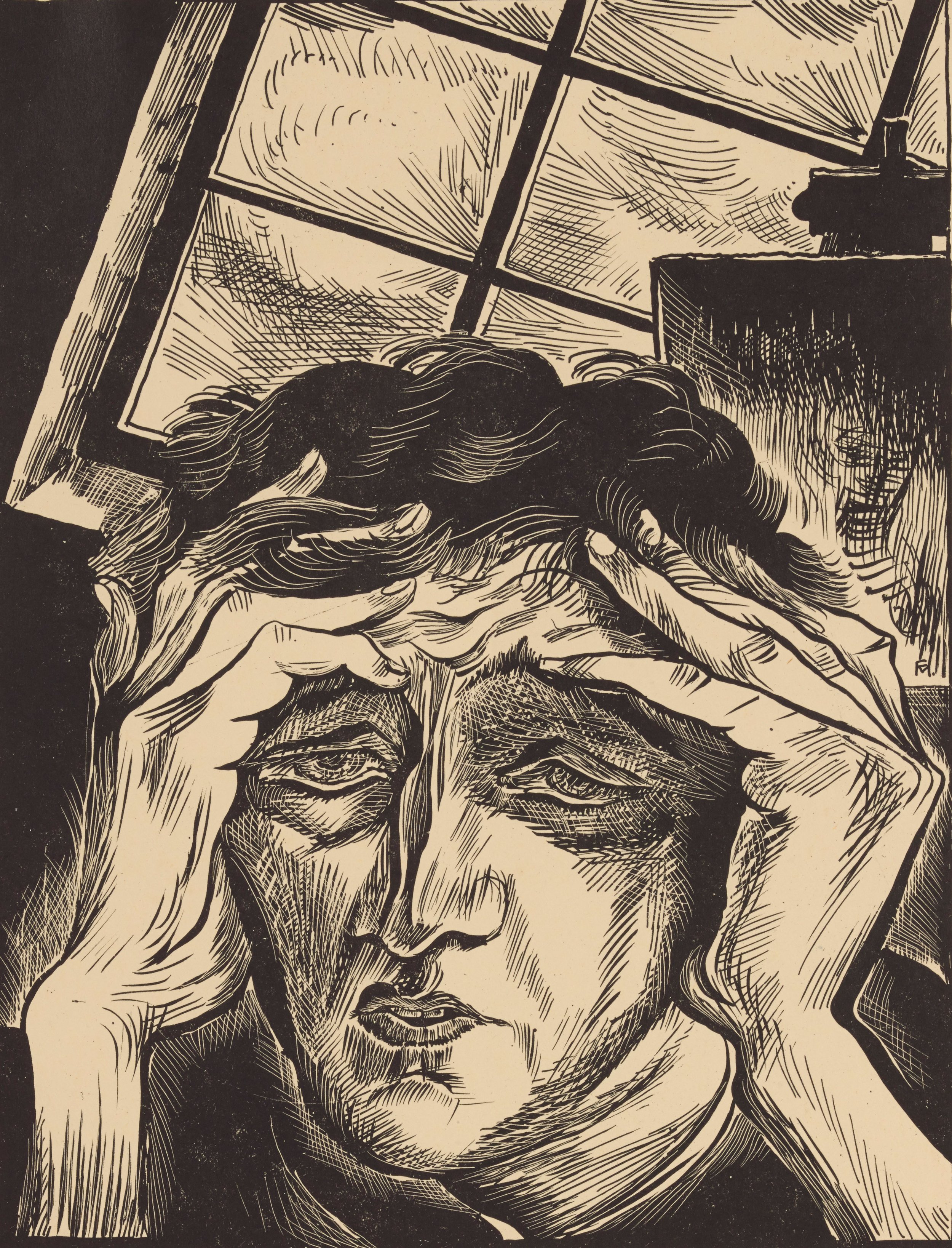Artscope magazine: Choice exhibitions beckon in Maine and New Hampshire
Conrad Felixmüller (Germany, 1897-1977), Depression in Studio, (Bedrucktsein in Studio), 1927, lithograph, 10 3/8 x 8 inches. Gift of David and Eva Bradford, 2006.30.5. Image courtesy of Luc Demers
In this ancient port city on the Casco Bay, you can’t help but be enchanted. Portland, Maine is known for its nightlife and 19th-century architecture, and certainly for its art galleries and the Portland Museum of Art. Boasting some of the most recognized names in the art world — Renoir, Edward Hopper, Roy Lichtenstein, Picasso, Diego Rivera and Andy Warhol, for starters, it also spotlights artists with Maine ties, including Winslow Homer, Alex Katz, NC Wyeth and Andrew Wyeth.
Its current show, “The Draftsman in Society: German Expressionist Prints,” on view through December 11, features German artists in the early 20th century who worked in a period of social and political crisis marked by military conflict, shifting social class dynamics and economic upheaval. The movement can be broadly defined as one that rejected all Western conventions previously associated with the production of traditional art.
German Expressionist art depicted the subjective feelings of the artists about the disillusion they saw in society as war loomed. As a result, artworks were profoundly emotive, unrestrained and shocking, as they attempted to convey ideas over the type of reality that was being experienced.
German Expressionist art took inspiration from artists such as Edvard Munch, El Greco and Vincent van Gogh at a time when artists were less concerned with producing work that held aesthetic value and instead focused on creating compositions that had the ability to emit powerful reactions when viewed. They accomplished this by combining jagged brush marks, incongruous colors and simplistic shapes, which were all authentic German Expressionism characteristics. Thus, the style created went against what was considered traditional art. The end result was this exceptional collection of German Expressionist portraits made by the German artists during a time of unrest. Printmaking — such as woodcuts, etchings and lithographs — were vehicles to communicate their social unrest and a society in crisis, which might just reflect our current time of unease.
Conrad Felixmuller’s “Depression in Studio” is a meticulously detailed small lithograph that captures the angst of the country post-World War I, and probably more poignantly, the artist during this unsettling time. Created in 1927, the lithograph displays a large ceiling window overhead, while the artist holds his head in dismay, shadowing his downcast eyes. All is not well.
Kӓthe Kollwitz’s 1903, pre-World War I, “Half-Length Portrait of a Working Woman with Blue Shawl” is another small lithograph that’s executed in a far more finished fashion, with softer execution, but with much contrast of light. She was married to a doctor who worked in one of Berlin’s poorest districts. A number of Kollwitz’s prints from this period depict — with unsentimental naturalism, but evident sympathy — the careworn features and dispirited demeanor of the proletarian women who consulted her husband. It affected her art distinctly, and this piece says so much even in its subtle presentation.
While you’re in Portland, wander on down to the waterfront for a bite to eat — maybe the DiMillo’s on the Water restaurant — a large floating vessel with seafood, nautical décor and harbor views — for lunch or a quick drink. And be sure to check out the fun boutique shops on the surrounding streets before heading home.

